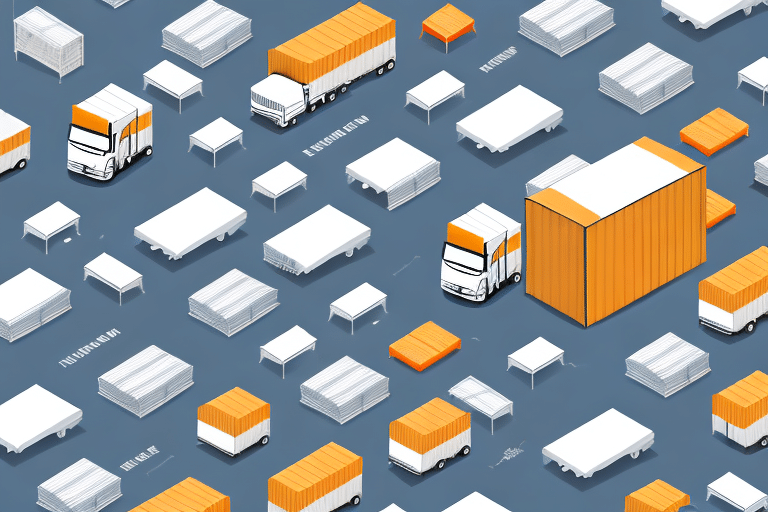When it comes to running a wholesale jewelry and precious stones business, shipping is an essential part of the process. Proper packaging and shipping can mean the difference between success and failure in the industry. As a beginner in the business, it's important to understand the ins and outs of shipping packages for your wholesale business to ensure that your products are delivered safely and reach their destination on time.
Why Proper Packaging and Shipping Are Key for Your Wholesale Business Success
Proper packaging and shipping are crucial in the wholesale jewelry and precious stones business. The quality of your packaging and shipping can impact the customer's perception of your business and the likelihood of repeat purchases. A secure and attractive package can make your customer feel valued and appreciated, while a subpar package can lead to negative reviews and decreased sales.
Shipping also affects your business's profitability. An inefficient shipping process can increase shipping costs, which can eat into your profit margin. Similarly, poor packaging can lead to damaged goods, which can result in expensive returns and lost revenue. Therefore, it's important to invest in proper packaging materials and choose the right shipping carrier to ensure that your products are delivered in excellent condition and on time.
Another important aspect of proper packaging and shipping is the impact it has on the environment. As a wholesale business, you have a responsibility to minimize your carbon footprint and reduce waste. By using eco-friendly packaging materials and choosing shipping carriers that prioritize sustainability, you can contribute to a healthier planet and attract environmentally conscious customers.
Finally, proper packaging and shipping can also enhance your brand image. A well-designed package with your logo and branding can create a memorable unboxing experience for your customers, which can lead to positive word-of-mouth marketing and increased brand loyalty. By investing in high-quality packaging and shipping, you can differentiate your business from competitors and establish a strong brand identity.
Understanding the Different Types of Jewelry and Precious Stones Packaging Materials
Choosing the right packaging materials is a critical component of ensuring that your products are delivered safely. When it comes to packaging jewelry and precious stones, there are several different options available:
- Boxes: Cardboard or plastic boxes provide excellent protection for your jewelry and precious stones during shipping. They're available in a variety of sizes to fit your products perfectly, and some also come with inserts or foam to keep your pieces secure and prevent them from shifting during transit.
- Bags: Plastic or velvet bags are a common packaging option for jewelry. While they're not as protective as boxes, they're more lightweight and can save on shipping costs. You can also purchase bubble bags which offer extra protection for delicate items.
- Wrapping materials: Bubble wrap, tissue paper, and jewelry boxes provide additional cushioning and protection. Wrapping each piece individually can prevent scratches and damage from contact during transit.
Aside from the packaging materials mentioned above, there are other options that you can consider when shipping your jewelry and precious stones. One of these is the use of padded envelopes. These envelopes are lined with bubble wrap or foam, providing an extra layer of protection for your items. They're also lightweight, which can help reduce shipping costs.
Another option is to use custom-made packaging. This is especially useful if you have unique or irregularly shaped items that require specific packaging. You can work with a packaging supplier to create custom boxes or bags that fit your products perfectly and provide the necessary protection during shipping.
Tips for Choosing the Best Shipping Carrier for Your Wholesale Business Needs
Choosing the right shipping carrier can be overwhelming, but it's an important decision that can impact your overall profitability. Here are some tips to help you choose the best shipping carrier for your wholesale business:
- Compare rates: Look into different shipping carriers to compare their rates and services. While services like Priority Mail by USPS and FedEx offer tracking and insurance for your packages, other carriers like DHL may offer cheaper rates for international shipments. Choose a carrier that fits your needs and budget best.
- Consider shipping volume: If you're shipping a large volume of packages, some carriers offer discounted rates for high volume shipping. Research these carriers to see if they fit your needs.
- Location: Consider the carrier's coverage area and shipping timeframes. Some carriers may have more extensive coverage areas, while others might have faster delivery times to certain areas. Select a carrier that aligns with your shipping needs.
Another important factor to consider when choosing a shipping carrier is their customer service. Look for carriers that offer reliable and responsive customer service, as this can be crucial in case of any issues or delays with your shipments. Additionally, consider the carrier's policies on lost or damaged packages, and make sure they offer adequate insurance coverage for your valuable wholesale goods.
How to Calculate Shipping Costs and Set Accurate Pricing for Your Customers
Calculating shipping costs is essential to ensure that you're setting accurate pricing for your customers. The shipping cost includes the carrier's fee and the cost of your packaging materials. You can estimate the cost by using shipping calculators provided by carriers like USPS and FedEx. This will give you an idea of the average shipping cost for your packages.
Once you've estimated shipping costs, you can then factor them into your product pricing. To accurately cover these costs, consider offering different shipping options with varying prices. For example, offering a free shipping option to customers who purchase products above a certain dollar amount or offering expedited shipping for an additional fee.
It's also important to keep in mind that shipping costs can vary depending on the destination and the weight of the package. To avoid any surprises, make sure to clearly communicate the shipping costs to your customers before they make a purchase. You can do this by providing a shipping calculator on your website or by including a shipping cost estimator in the shopping cart. By being transparent about shipping costs, you can build trust with your customers and avoid any potential issues or complaints down the line.
Best Practices for Labeling and Identifying Your Packages to Ensure Safe Delivery
Proper labeling and identifying of your packages set your products up for safe delivery. Here are some best practices on labeling and identifying packages:
- Include a clear return address on the package, as well as the customer's address and name.
- Select a carrier that includes tracking information on your package to help you monitor the progress of your shipment.
- Indicate on the package if it contains fragile items to prevent rough handling during transit.
- Include an invoice with the package. Make sure the invoice includes your business name and the customer's order details, including a description of the products and their pricing.
Another important aspect of labeling and identifying your packages is to ensure that the package is properly sealed. Use strong packaging tape to seal the package and make sure that it is securely closed. This will prevent any damage or loss of the contents during transit. Additionally, it is important to label the package with any special handling instructions, such as "perishable" or "keep refrigerated" if necessary. By following these best practices, you can ensure that your packages are delivered safely and efficiently to your customers.
How to Pack and Ship Fragile Jewelry and Precious Stones to Prevent Damage During Transit
Due to the delicate nature of jewelry and precious stones, it's essential to pack them properly to minimize breakage as they transit. Here are some best practices for packing fragile jewelry and precious stones:
- Wrap each piece individually using bubble wrap, tissue paper, or a combination of both.
- Use a foam insert or a jewelry box to keep pieces from shifting during transit.
- Box these packages with multiple layers of support to prevent movement during transit.
Optimizing Your Shipping Process: Streamlining Order Fulfillment, Tracking, and Customer Communication
Streamlining your shipping process using automation tools allows you to increase order accuracy and reduce shipping time. This approach includes using an order management tool that automatically sends shipping status updates to customers. Here are some other ways to optimize your shipping process:
- Centralize fulfillment: Keeping your orders in one central location helps you to efficiently process and ship them.
- Automate shipping: Use carrier provided integrations to integrate with your warehouse management system to print packing slips, reduce shipping errors, and ensure consistency in your shipping process.
- Offer self-serve options: Consider offering your customers the flexibility to track their orders by providing them with tracking numbers, allowing them to track the progress of their delivery.
Common Mistakes to Avoid When Shipping Packages for Your Wholesale Business
While it's important to know what to do when shipping your products, it's equally important to know what not to do. Here are some common mistakes to avoid when shipping packages for your wholesale business:
- Using sub-par packaging: Cheaply made packaging materials can protect and secure your products as well as expensive materials.
- Skipping on quality checks: Always perform a final quality check to ensure that all orders are complete and accurate before shipping.
- Not double-checking addresses: Double-check customer information to ensure that you have the correct address, reducing shipping delays, and costly mistakes.
Going the Extra Mile: Adding Personalized Touches to Enhance the Customer Experience
Going above and beyond with personalized touches can help to create a customer experience that guarantees a return. Here are some personalized touches that you can add to your shipments:
- Include personalized thank you notes within the package to thank your customers and make them feel appreciated.
- Provide a discount code for future purchases in your basic package to encourage customers to return and offer referring promotions to encourage customers to refer your business to others.
Future-proofing Your Wholesale Business: Keeping Up with Changing Shipping Trends and Technologies
As the shipping industry continues to evolve, your business needs to keep up with changing trends to remain competitive. As such, consider doing the following:
- Be aware of industry trends: Stay up to date with industry trends in both shipping and the wholesale industry as a whole to help propel your business forward.
- Embrace new technologies: Explore new technologies and innovations available and how your business can leverage such tools to streamline your shipping process further.
- Continuously review your shipping processes: Continually review your shipping process to identify areas of improvement to stay ahead of the competition and ensure customer satisfaction.
In conclusion, proper packaging and shipping are crucial to the success of your jewelry and precious stone wholesale business. By understanding the different types of packaging materials available, choosing the right shipping carrier, streamlining order fulfillment, tracking and customer communication, and offering personalized touches, you can provide your customers with a superior shopping experience and ensure that your products are delivered swiftly and safely. With these tips in mind, you can future-proof your business and remain competitive.









